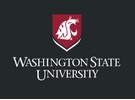In the Columbia River Basin, as in other basins across the western United States, water allocation decisions and processes are important for making the most of naturally variable water resources for diverse instream and out-of-stream purposes. Tradeoffs inherently exist with so many competing uses for water, especially during drought years when available water is limited. Maximizing opportunities for water to be tasked to its highest valued potential use, both within agricultural systems and across its many competing uses, is important for making the most out of scarce water resources. Improved information increases the efficacy of new management approaches, and emerging information technologies provide opportunities for enhancing the region’s resilience to drought by making water use more flexible. Such information-related innovations are already changing the legal and management landscape of water resources in the western U.S.
The Technology for Trade project, a five-year project launched in 2018, contributes to enhanced efficiency of water use by furthering the development of information technologies and complementary innovations in the rules that govern water use. In particular, the Technology for Trade team aims to further the development and application of three promising and complementary emerging technologies: improved seasonal forecasting, remote measurement of crop water consumption, and computer-aided ‘smart’ water markets. In addition, legal, regulatory, and contractual innovations can be important to allow water users to use these technologies as effectively as possible while protecting the water rights of others.
The project is led by the Water Research Center at Washington State University and includes partners from the Center for Sustaining Agriculture and Natural Resources, as well as the School of Economic Sciences, the Department of Civil and Environmental Engineering, and the Department of Biological Systems Engineering at Washington State University. Other partners are from the University of Washington, the University of Idaho, the University of Utah, Aspect Consulting, and ERA Economics.
Improved Seasonal Forecasting
The forecasting effort utilizes seasonal climate forecasts that are currently available with lead times of about eight months (i.e., the North American Multi-Model Ensemble) and is exploring regional translation to forecasts of water availability and related metrics. The seasonal forecasting effort will identify when, where, and what metrics can be forecast with enough lead time, accuracy, and precision to be useful in decision-making. For example, improved seasonal water forecasting could help farmers plan their planting and water use activities earlier and with less uncertainty. Timely and informed decisions could then facilitate water transfers during times of shortage, including dry-year (options) contracts or public reverse auctions to augment instream flows.
Remote Consumptive Use Measurement
The Technology for Trade team is also working on a number of methods for remote detection and quantification of consumptive use in a spatially explicit manner using both satellite and drone-based imaging. Evapotranspiration is closely related to crop consumptive water use. The focus of this technology is thus irrigated agriculture, which is an important economic engine and accounts for the majority of regional out-of-stream consumptive water use. A model is being revised to not only detect water stress in a spatial manner but to quantify water use differences within a field. This could be used to better guide variable rate irrigation systems and improve yields. During dry years, consumptive use measurements could support improved deficit irrigation strategies and perhaps partial leasing of water rights. At a basin scale, satellite-based imagery could help protect water rights against increases in consumptive use elsewhere in a watershed and complement existing water metering efforts.
Computer-Aided ‘Smart’ Water Markets
This aspect of the project examines both the barriers to more active water markets and possible methods for easing the process of matching multiple sellers and buyers of water and helps navigate the highly complex regulatory constraints for a successful trade. This could facilitate temporary transfers during times of shortage to the most valuable uses, both in-stream and out-of-stream, in ways that do not impair other water users. The team carried out a water management survey across the Yakima, Okanogan, Methow, and Walla Walla watersheds in Washington State and also built a functional “agent-based” trading model that can be used to explore interactions between water policy and water markets.
For more information:
Washington State University
www.csanr.wsu.edu

